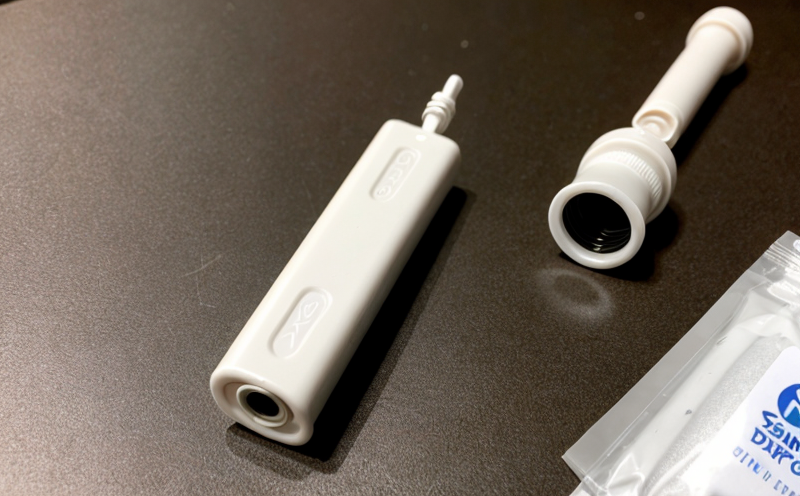Catheter Fatigue Resistance Testing
The catheter is a critical component in modern medical practice. It serves as an essential conduit for administering treatments and diagnostics, ensuring the safe and effective transfer of fluids or instruments into and out of the human body. The durability and reliability of these devices are paramount to patient safety. Fatigue resistance testing specifically evaluates how a catheter withstands cyclic loading until failure. This ensures that the device can perform its intended function repeatedly without degradation over time.
Material properties, design features, manufacturing processes, and environmental factors all contribute to determining fatigue behavior in medical devices. In this context, fatigue testing is crucial for understanding how repeated stress affects the integrity of catheters during use. The test involves subjecting a specimen to controlled mechanical loading cycles until it fails due to material fatigue. This process helps identify potential weaknesses that could lead to device failure under real-world conditions.
During this procedure, careful consideration is given to selecting appropriate parameters such as frequency and magnitude of applied loads based on expected clinical use scenarios. Specimen preparation includes ensuring consistent geometry and surface finish across multiple samples to minimize variability in test results. Instrumentation used typically consists of specialized fatigue testers capable of applying controlled forces while monitoring displacement and strain.
Accurate reporting is also essential for interpreting the outcome of these tests correctly. A comprehensive report should outline key findings regarding maximum load capacity achieved before failure, number of cycles until failure occurred, observed modes of failure (e.g., tensile cracking vs. shear fracture), and any significant deviations from expected behavior.
Understanding ISO standards like ISO 14821:2007 or ASTM F88-15 provides valuable guidance on best practices for conducting reliable fatigue tests on catheters. These documents specify recommended protocols, sample sizes, environmental conditions, and acceptance criteria necessary to ensure consistent quality across different laboratories.
By incorporating rigorous fatigue resistance testing into your product development process early on, manufacturers can proactively address potential issues before they impact patients or compromise device performance in critical situations. This proactive approach not only enhances overall safety but also builds trust among healthcare providers and end users who rely heavily upon these devices for effective care.
- Use Case 1: Ensuring consistent quality across production batches by identifying variations that may arise due to changes in raw materials or manufacturing techniques.
- Use Case 2: Evaluating the impact of design modifications on fatigue life, allowing developers to make informed decisions about optimal material selection and component integration.
- Use Case 3: Meeting regulatory requirements set forth by agencies such as FDA or EMEA, ensuring compliance with international standards governing medical device safety.
Why It Matters
The importance of catheter fatigue resistance testing cannot be overstated. A single failure can have severe consequences for both the patient and healthcare provider. For instance, if a catheter fractures during insertion or use, it could result in pain, infection, prolonged recovery time, or even life-threatening complications.
Moreover, such failures often lead to increased medical costs associated with additional procedures needed to correct the issue. From a broader perspective, recalls and withdrawals of defective products from the market can damage brand reputation and trust among consumers. Therefore, investing in thorough testing early in the design cycle is crucial for maintaining high standards of quality assurance throughout the product lifecycle.
The results obtained from fatigue tests provide valuable insights into the expected longevity of catheters under various operating conditions. This information allows manufacturers to optimize their designs, improve manufacturing processes, and enhance overall product reliability. Ultimately, this contributes to better patient outcomes while reducing risks associated with substandard products entering clinical practice.
Regulatory compliance is another significant reason why fatigue resistance testing is essential for medical device companies. Regulatory bodies around the world set stringent guidelines that must be adhered to ensure safety and efficacy of all marketed devices. By performing comprehensive fatigue tests, manufacturers demonstrate their commitment to meeting these requirements, thereby minimizing regulatory scrutiny and potential delays in bringing new products to market.
Why Choose This Test
Selecting catheter fatigue resistance testing offers numerous advantages for medical device manufacturers. One of the primary benefits is the ability to identify early-stage flaws within a catheter's design or manufacturing process that might otherwise go unnoticed until it reaches end users. Early detection allows companies to address these issues promptly, preventing costly recalls and maintaining consumer confidence.
In addition to identifying defects, fatigue testing also helps refine the overall performance of catheters by providing detailed data on their cyclic loading capabilities. This information enables manufacturers to make informed decisions regarding material choices, structural modifications, and manufacturing techniques that enhance durability without compromising functionality or ease-of-use.
Another advantage lies in ensuring regulatory compliance through rigorous testing protocols aligned with recognized international standards like ISO 14821:2007. By adhering strictly to these guidelines during product development, companies can streamline the approval process and avoid costly delays associated with non-compliance.
The reliability offered by fatigue resistance testing extends beyond just meeting regulatory requirements; it also contributes significantly towards building trust among healthcare professionals who rely on these devices for accurate diagnosis and treatment. Knowing that every catheter has undergone stringent quality checks reassures clinicians about its safety and efficacy, fostering greater confidence in recommending them to patients.
Lastly, incorporating fatigue testing into the R&D phase allows manufacturers to stay ahead of emerging trends and technological advancements in medical device design. Continuous improvement driven by reliable test results ensures that products remain competitive within an ever-evolving healthcare landscape.





